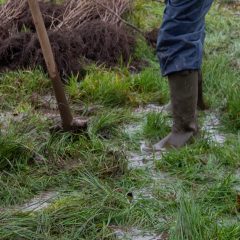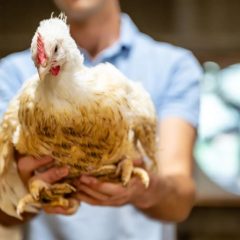Research project Reduction of ammonia emissions in organic livestock farming

General introduction
For organic pig, poultry and goat farms, the RAMBIO project conducted a comprehensive test of existing conventional AEA techniques and PAS (nitrogen) measures against organic legislation. The researchers also assessed their practical and economic feasibility for the organic sector. The findings are neatly presented in the report "Screening of Ammonia Emission Reduction Measures for Applicability in Organic Livestock Farming and Recommendations for Further Research". For organic livestock farms, this makes clear the bottlenecks and/or benefits for each measure. Organic farms also fall under the legal obligation to help solve the nitrogen problem in Flanders (Belgium).
Research approach
After the review of common measures (compatibility with biological legislation or not), the literature review on usability within organic farming and the determinations of practical and economic applicability (through discussions with the sector and experts), the researchers categorized the measures. All measures were structured according to emission reduction principle, potential, bio-compatibility and feasibility. Finally, knowledge gaps were identified. The need remains for concrete data on ammonia emissions and specifically adapted reduction measures for organic livestock farmers.
Relevance/Valorization
The RAMBIO report provides important guidance for both livestock farmers and policy makers in the search for sustainable and feasible ammonia reduction measures within the organic sector. The study showed that few concrete, applicable solutions are available and that further studies are needed to develop effective measures. This led to a follow-up project (BOWIE), which includes the development of a measurement method for naturally ventilated stables with outdoor runs and further investigation of the effects of organic practices, such as temperature effects and lower stocking densities.







